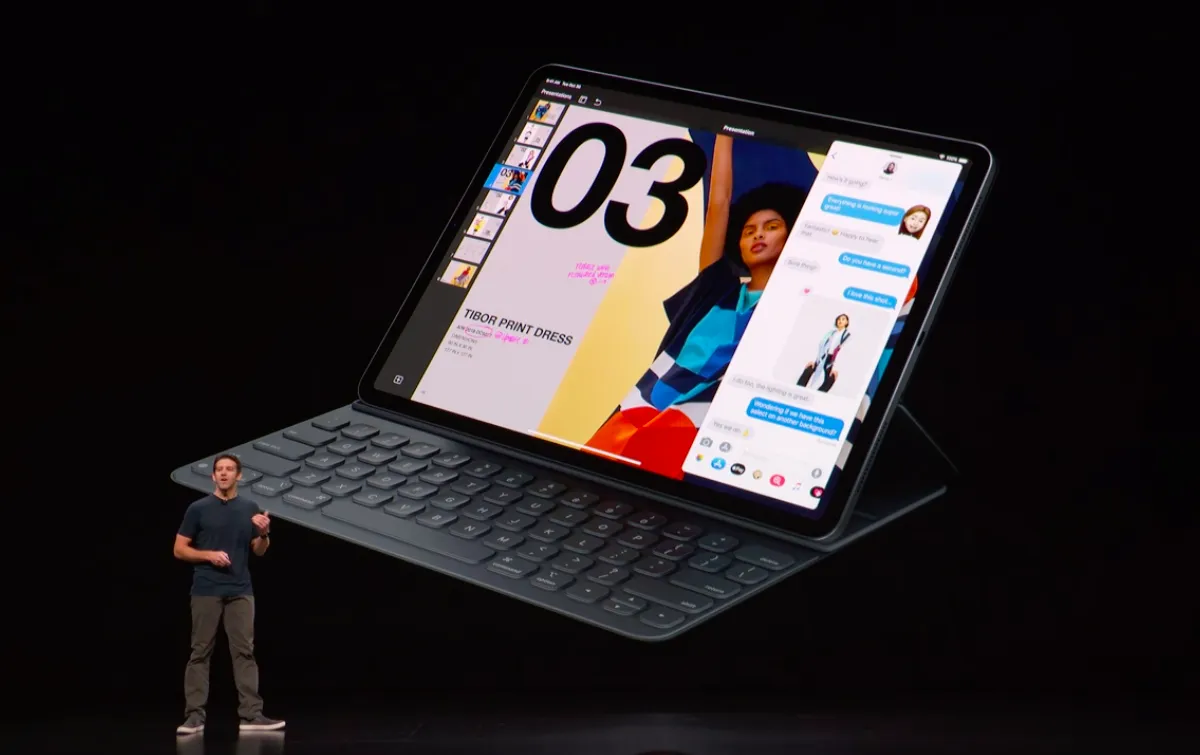According to a new report from The Elec, Samsung is preparing to build its first Gen 8.5 OLED production line, which could start producing panels in 2024. The report also says the panels will be used in Apple's products. It also mentions that Apple is planning to use OLED panels in its tablet and PC lineup. There have been numerous supply chain reports regarding the OLED iPads. Analyst forecasts suggest that Apple will move its iPad lineup to OLED displays in the near future. Some of these reports mention that Apple plans to release an OLED iPad in 2022. However, others suggest that the transition to the newer display technology could happen in 2024.

Nevertheless, The Elec's report, while noting that Samsung's new Gen 8.5 production line won't be ready to produce OLED panels until 2024, claims that Apple's first OLED tablets will use existing production lines from Samsung and LG's display divisions.
According to reports, Apple had to scrap plans to release an OLED-based iPad Air in 2022. This is due to issues such as cost, brightness, and durability at the time. However, conflicting reports suggest that OLED displays on Apple's tablets may arrive sooner.
If The Elec's report is solid, it suggests that 2024 iPads with OLED panels will use a more advanced version of the display technology than the panel variants currently on the production line. The latest information suggests that Apple may update its 11-inch iPad Pro and 12.9-inch iPad Pro with OLED panels at the same time.
iPad Pro to bring some upgrades
The iPad Pro will probably officially arrive in October this year. The current news shows that the iPad Pro 2022 will bring an upgrade in design. The screen will follow the mini LED technology on the 2021 model.
In addition, this year's iPad Pro will provide an ultra-narrow bezel design, and the screen ratio will significantly increase. This tablet will come with the popular notch display. However, the company will upgrade the notch structure and will be less conspicuous. In addition, the fuselage structure is still flat, but the Apple logo on the rear will take a new placement and design.
In fact, Apple has a long-term plan for product line design. Under the premise that the iPhone 12 mini is not very popular, Apple still released the iPhone 13 mini, but only cut off the mini product line this year and replaced it with a larger iPhone 14 Max. The iPhone 14 Max replaces the poorly performing mini model. In the same way, the 12.9-inch iPad Pro debuted a display with mini LED technology in April last year. It has just been a full year, and last year's 11-inch iPad Pro has not yet used mini LED technology.
Therefore, there are estimates that this year and even next year, Apple will continue to use the mini LED display technology. The company will continue to upgrade the iPadOS. There will also be subtle changes in product design and even the third-generation Apple Pencil. The company will also bring some improvements to the latest Magic Keyboard peripherals to attract users.
After 2024, the 12.9-inch iPad Pro will be the first to change the OLED screen technology to stimulate the consumer market to replace it.
iPad Productivity
Apple will also boost the iPad productivity with the upgrades to the iPadOS. A recent report claims that if a keyboard and trackpad are connected, iPadOS applications may become floating windows like Quick Notes instead of opening in full screen. We know that since the iPad debuted in 2010, every app has been launched full screen. There have been some improvements since then, like the split-screen view, but all window management is up to the user.
One of Apple's major strategies in recent years has been to improve the productivity of the iPad. To this end, it has launched the iPad Pro series of products, and also equipped the iPad Pro with the desktop-level M1 chip. The company also specially designed the iPadOS system for the iPad.
However, the productivity experience of iPadOS is still not comparable to that of traditional desktop platforms. The fact that applications do not support windowing mechanisms is one of the reasons. Now the new argument is that Apple may bring changes in this regard. According to reports, Apple is developing a smart system for iPadOS. Apps will continue to open fullscreen by default, but will automatically shrink when it detects an iPad connection to a keyboard and trackpad. Internally, it's called the Apple Mixer.






Place comments
0 Comments
You are currently seeing only the comments you are notified about, if you want to see all comments from this post, click the button below.
Show all comments